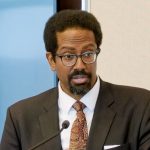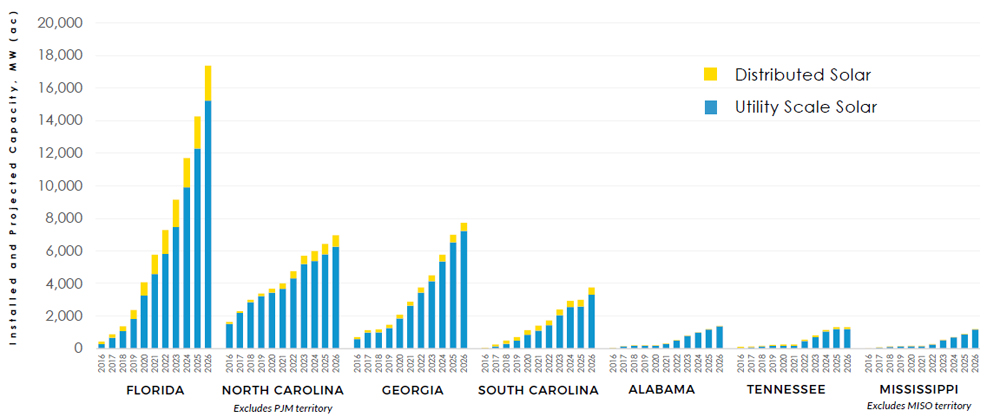NEW YORK — With individual project budgets reaching into nine and 10 digits, financing often is front and center in discussions of the clean energy transition.
And it was the leadoff topic Wednesday, as the Northeast Chapter of the Energy Bar Association convened its annual meeting in Manhattan.
The confluence of headwinds and tailwinds in the early 2020s — war, contagion, inflation, policy support, the end of cheap capital, massive tax credits, massively complicated rules for those tax credits, delay upon delay — makes for interesting times.
Kurt Strunk, managing director of National Economic Research Associates, said the fundamentals are the same as always: “What’s really needed is strong economic governance and reliable institutional foundations … The good news is, the institutional structure is there.”
The traditional formula to finance a power plant — “an airtight offtake contract with a creditworthy counterparty” — is still a winning combination, in his opinion.
“It’s true that the amount of investment needed to affect the energy transition is daunting,” Strunk acknowledged.
The extensive tax credits of the Inflation Reduction Act were intended to accelerate the U.S. clean energy transition and help create a domestic manufacturing base to supply it. A secondary beneficiary has been the army of legal and financial experts putting together deals to leverage those credits.
Financing the Transition
“Tax equity bridge financing has been the flavor of the year so far,” said David Avila of Paul Hastings LLP. “Everyone, with the IRA coming into place, is trying to take advantage of the ITCs and PTCs. That has really increased demand for the tax equity, which is now completely outstripping the supply.”
He said he has spoken recently with banks that have traditionally worked only in debt but are now looking to move into tax equity. “I think that’s going to be something we see evolving over the next couple of years.”
Also, Avila said, banks are getting more comfortable closing on just a letter of intent with a credit-rated entity, rather than the signed tax equity contribution agreements traditionally required. That puts much more scrutiny on the sponsors themselves, he added.
“We’re spending a lot more time structuring these deals than we ever have before. It’s a lot more problem-solving and constructing the financing.”
One aspect of the IRA — the domestic content adder — is problematic at this stage, Avila said. With U.S. manufacturing still ramping up or even still on the drawing board in mid-2023, it’s entirely possible a project planned now will have less domestic content than originally expected once it’s completed, years in the future. If the domestic content adder was factored into the financing but the project is disqualified from receiving it, there’s suddenly a big hole in the financials.
Another problem Avila is seeing more than in the past is project attrition.
If interconnection upgrade costs are spread between several projects in the queue, and some of those other projects drop out of the queue, the entire cost falls on the surviving projects, blowing out their contingency budgets.
“We’re getting a lot of questions from lenders … asking us to go into the dockets to see which interconnection providers have had these issues,” Avila said.
Vikram Bakshi, managing director at Skyline Renewables, said he’s been working in renewable energy since 2006 and sees enormous opportunity in 2023.
“In terms of market trends, couldn’t be more optimistic,” he said. “We see trillions of dollars of opportunity — not just cleaning up the grid, but if you look at decarbonization of the rest of industry, the numbers are enormous.”
Renewables are the cheapest form of generation, there’s regulatory support for them, the IRA creates tailwinds and corporations want to boost their ESG profile with green energy, he said.
“I’m not sure what obstacles and headwinds you’re talking about, Kurt,” Bakshi added, drawing a laugh from the audience.
Supply chain, financing, interest rates and indexed pricing, Strunk replied.
Bakshi acknowledged short-term supply chain constraints, cost increases and delays and uncertainty about IRA guidance.
“But that’s going to be sorted out. We’re in no rush,” he said.
Bakshi added an important detail: Skyline is not in early stage renewable development. It typically steps in at the notice-to-proceed or the commercial-operations-date stage.
Alex Stein, senior counsel at the New York State Energy Research and Development Authority, added the perspective of a governmental entity leading a clean energy transition and awarding billions of dollars’ worth of contracts to carry it out.
NYSERDA has built some flexibility and adaptation into its clean energy solicitations. Earlier rounds allowed developers to bid a fixed price for renewable energy credits or a strike price indexed to the zonal energy and capacity price.
It is not a perfect hedge, Stein said, but it insulates against a lot of volatility.
The most recent solicitations have the option of an inflation adjuster, he said.
The period from proposal to start of construction is particularly long in New York. Developers of most of the pipeline of clean energy projects the state’s leaders boast about had locked in their compensation — but not their input costs — before the tumultuous events of the past three years.
Developers of much of the onshore portfolio and almost all the offshore portfolio this month petitioned for the same inflation index as NYSERDA is offering newer projects, saying they can’t obtain financing without it.
Stein did not touch on the petitions, which await review by the state Public Service Commission.
But he said NYSERDA took steps to recoup some of the windfall offshore wind developers might receive through IRA tax credits: “We see it as a way of sharing the potential upside of this and also reflecting the uncertainty that remains.”
Another provision in the latest offshore solicitation allowed developers to recoup higher-than-expected interconnection costs and required them to turn over most of the savings if those costs were lower than expected.
It is an evolving process, Stein said: “I think we can brainstorm on how to iterate this in the future.”
Role of Natural Gas
It was observed Wednesday that practitioners of energy law have tended to focus either on electrons or molecules — electricity or gas — but that those lines are blurring because natural gas has become an important fuel for generating electricity and electricity will be used to generate another gas: hydrogen.
Chris Smith, regulatory counsel to the Interstate Natural Gas Association of America, said natural gas has a critical role to play in the power grid for many years to come.
“There’s this perception that for the time being we can just gut it out because eventually we’re going to be transitioning to more renewable resources … we can kind of just squeak by the next couple years and then this thing will work itself out,” he said.
“Admittedly biased view, but I think for a lot of these problems you are going to need additional natural gas pipeline infrastructure — we don’t have enough now and we’re going to need more in the future,” Smith said.
Brian Fitzpatrick, principal fuel supply strategist at PJM, agreed.
He said gas fuels almost half of the RTO’s installed generation, but not all the generators have a locked-in supply. “About half of that has some firm level of transportation associated with it,” he said. “In an ideal world we’d love that to be 100%, but it’s not available — most of the large pipelines in this system are fully subscribed.”
Fitzpatrick said PJM is looking at 40 GW of potential fossil fuel retirements by 2030, mostly coal, without a similar amount of replacement capacity coming online in the same period. There needs to be multiple gigawatts of new renewable energy for each gigawatt of coal retired, but that is not happening, he said. Only about 8 GW of natural gas is in the queue.
“That mismatch can’t continue — otherwise we’re facing a significant reliability concern going forward,” he said.
PJM is gathering stakeholder input and intends to address this with a FERC filing by the end of October.

